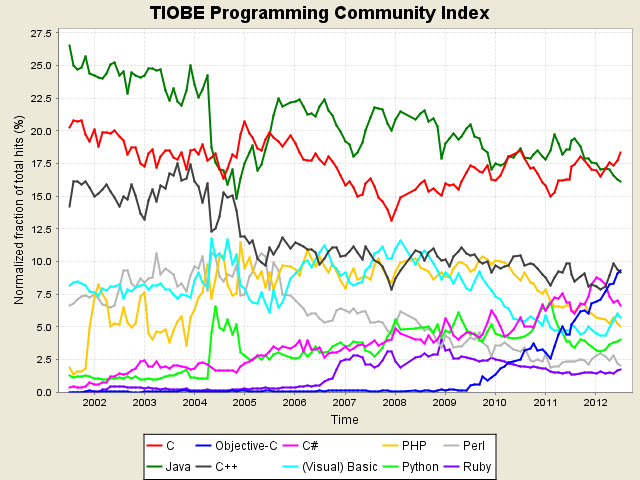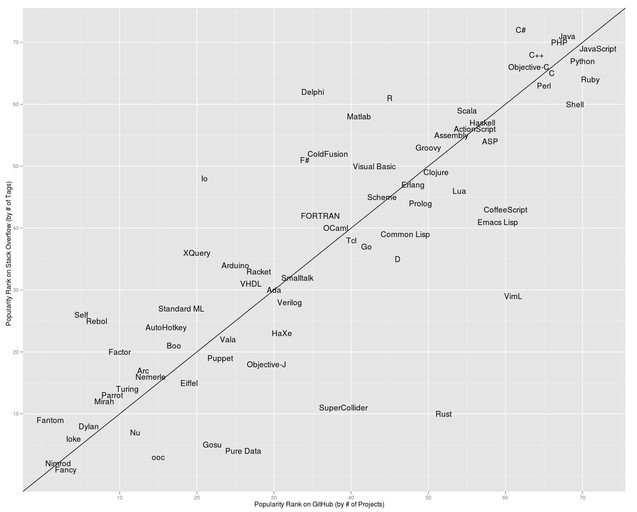According to the TIOBE Index, Objective-C is now more popular than C++, showing proof that mobile development is surging ahead as we enter the post-PC era.
Objective-C is the object-oriented programming language used by developers for iOS. It had its start in 1983, the same year C++ was created. C++ proved far more popular over the years. But in 1988, Steve Jobs changed the course of Objective-C’s future when he licensed it for NeXT. It had less than 1% market share until 2009 when iOS development really started to take off, thanks largely to the iPhone and iPad.
The two programming languages do not really compete very much anymore, as the TIOBE index shows . C++ is used heavily in large high-performance systems whereas Objective-C is mainly used in the mobile apps industry.
Also of note: the Java programming language dropped to the number two spot. It traded spots with the C programming language which benefitted from Java’s 3.16% drop compared to this time last year.
TIOBE provides a monthly index. According the site, “the ratings are based on the number of skilled engineers world-wide, courses and third party vendors. The popular search engines Google, Bing, Yahoo!, Wikipedia, Amazon, YouTube and Baidu are used to calculate the ratings.”
Here’s a look at how the programming languages compare.
The rankings should be taken as an anecdote about the state of the market for programing languages. For example, the rankings are much different from what Stephen O’Grady posted in February on the RedMonk blog. He ranked Objective-C twelfth overall.
The ranking difference is largely due to the criteria each use. RedMonk tiers programming languages and compares data from communities such as GitHub, Stack Overflow and LinkedIn while as noted, TIOBE looks largely at search engines.
The rankings provide context for the state of overall enterprise application development. Java, the long time enterprise favorite, may be showing signs that it is dropping off in popularity compared to Objective-C and others.
Look at O’Grady’s findings and you can glean another story. His results show the fracture in the programming language landscape. They reflect how vendors are changing their views in what languages to support. Java and Microsoft are not the only software stacks any more. Vendors need to consider a host of options. He explains that is why in many respects that platform-as-a-service (PaaS) stacks like Cloud Foundry and OpenShift differentiated at launch with support for multiple programming languages.
The future for enterprise vendors will look more like what CloudFoundry and OpenShift are doing. But the overall driver for growth will be the apps that developers build. In that respect, I expect Objective-C will continue to grow in popularity across the enterprise landscape as the mobile market continues to boom.

































Comment